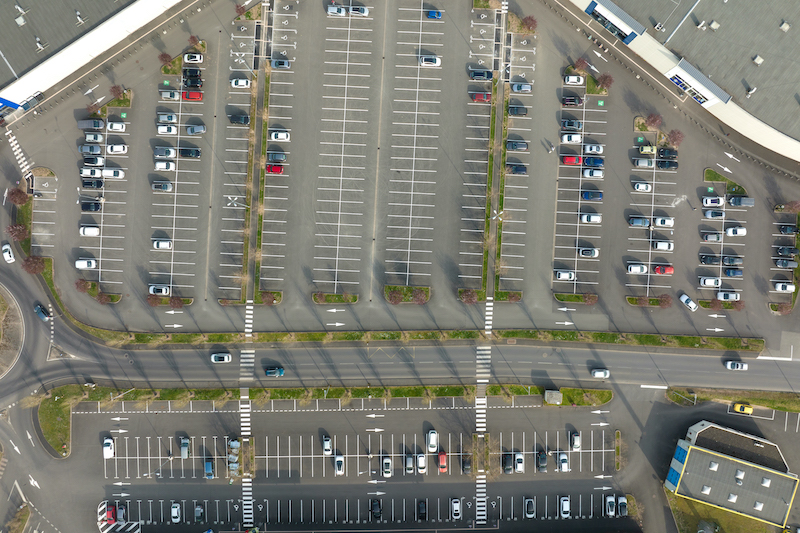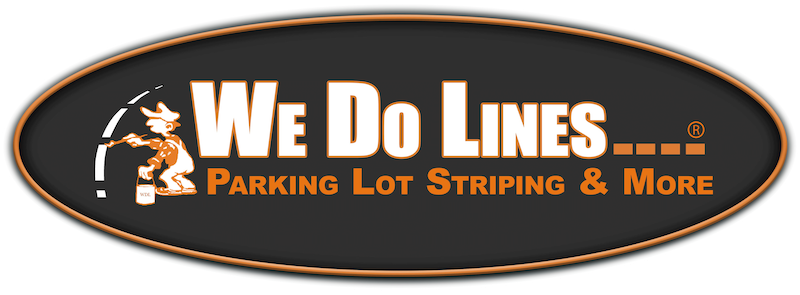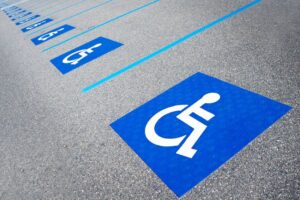Parking lots are essential components of our daily lives, providing us with convenient spaces to park our vehicles on the roads, at businesses, and at residences. With that being said, over time, factors such as gasoline and oil spills, as well as exposure to salt during winter months, can significantly impact the appearance and functionality of parking lot striping. We Do Lines understands that gasoline, oil, and salt directly impact parking lots, so it’s important for us to highlight the importance of timely restriping for safety, aesthetics, and professional representation. All of these factors will help you in deciding what is best for your parking lot going forward.
Gasoline and Oil: Culprits of Deterioration
Gasoline and oil spills are common occurrences in parking lots, especially near fuel stations and busy traffic areas. These spills not only pose environmental risks but also contribute to the deterioration of parking lot striping. The chemicals present in gasoline and oil can break down the paint, causing it to fade, crack, or peel. Additionally, these substances may penetrate the asphalt surface, further compromising the integrity of the parking lot. That’s why We Do Lines additionally offers asphalt repair on top of its line restriping services.
The Role of Salt in Winter Maintenance
During winter, road maintenance crews use salt or de-icing agents to keep roads safe and free from ice. However, this practice can inadvertently impact parking lots and asphalt. When snow and ice melt, the salt-infused water accumulates on parking lots, leading to prolonged exposure. Salt is highly corrosive and can accelerate the degradation of striping materials, causing them to erode or fade faster than normal. What does this mean? You’ll be needing to restripe your lot, A LOT.

The Importance of Restriping:
- Pedestrian and Motorist Safety:
- Clear and visible parking lot striping plays a vital role in ensuring safety for pedestrians and drivers alike. Faded or worn-out striping can lead to confusion, increased risk of accidents, and inefficient use of parking spaces. Restriping the lot at regular intervals helps maintain clearly marked lanes, parking spaces, crosswalks, and loading zones, minimizing the likelihood of collisions and maximizing safety. Pedestrians will be able to cross lots because drivers will understand the bounds of driving and more, so keeping these lines as clear as possible is essential to keeping those who visit your lots safe.
- Aesthetics and Professionalism:
- First impressions matter, and a well-maintained parking lot speaks volumes about the overall image and professionalism of a business or establishment. Freshly restriped lots enhance curb appeal, giving a clean and organized appearance. Customers, employees, and visitors will appreciate the attention to detail and the sense of order provided by properly maintained striping. It’s effective AND it looks good, which is a combo you want to present to those visiting your lot.
- Compliance with Regulations:
- Many municipalities and jurisdictions have specific regulations and guidelines regarding parking lot striping, including requirements for accessible parking spaces, fire lanes, and crosswalks. ADA compliance is especially important because you want to make sure those with disabilities can access your lots as easily and regularly as those without. ADA compliance typically includes designated spaces near the entrances of buildings and larger spaces to allow wheelchair-loading vehicles the space they need to aid wheelchair-bound visitors easily. By regularly restriping the lot, businesses can ensure compliance with these regulations, avoiding potential fines and legal issues.
- Timing Restriping:
- The frequency of restriping depends on various factors, including the volume of traffic, climate conditions, and the quality of the initial striping. As a general guideline, it is recommended to restripe every two to three years or as soon as signs of wear and fading become noticeable. However, high-traffic areas or lots exposed to harsh conditions may require more frequent restriping. Ultimately, We Do Lines can assist you in deciding how frequently restriping should occur.
Restriping parking lots at appropriate intervals is crucial for maintaining safety, aesthetics, and compliance with regulations. Gasoline, oil spills, and exposure to salt during winter can expedite the deterioration of striping materials, emphasizing the need for timely maintenance. Investing in restriping efforts allows businesses and property owners to create safer, more welcoming environments while preserving the functionality of the lots.




